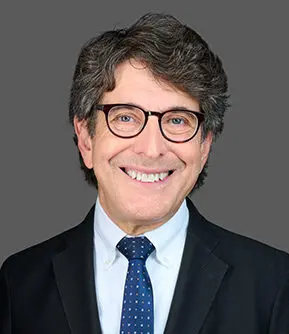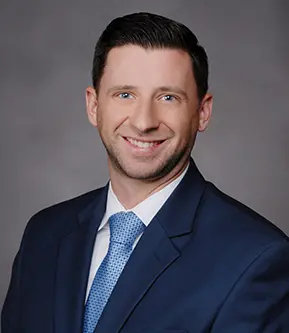OIG Says Proposed Surgery Monitoring Arrangement May Violate Kickback Statute
On Aug. 18, the Office of Inspector General in the Department of Health and Human Services (OIG) issued Advisory Opinion 23-05 in which it concluded that a proposed arrangement involving the formation of a company (Newco) by surgeons who perform surgeries requiring intraoperative neuromonitoring (IONM) and a contractual arrangement between Newco and the party requesting the opinion (Requestor) would, if undertaken, generate prohibited remuneration under the Federal anti-kickback statute (AKS), if the requisite intent were present.
The opinion is significant in that it again illustrates how the OIG may treat business arrangements with characteristics of a contractual joint venture as prohibited arrangements under the AKS.
The Historic Business Arrangement
The historic business arrangement among the parties can be summarized as follows:
- IONM is used to observe a patient’s neurological functions during certain surgeries.
- IONM services have a technical component and a professional component:
- The technical component involves a neurophysiologist, located in the operating room of a hospital or ambulatory surgical center (ASC) while a surgery takes place, setting up the IONM equipment and ensuring it works properly
- The professional component involves a neurologist monitoring the test results and waveforms generated by the IONM equipment during the surgery in real time
- Requestor is a company that contracts with hospitals and ASCs under an IONM services agreement to both:
- Perform the technical component of IONM services for surgeries at those facilities through its employed neurophysiologists
- Arrange for the performance of the professional component of IONM services for the same surgeries through neurologists in a physician practice that has a management services agreement with Requestor (Practice)
- When surgeons wish to schedule IONM services for one of their surgical cases, they contact Requestor. Requestor then schedules one of its neurophysiologists to perform the technical component for the surgery and contacts Practice to arrange for Practice to assign a neurologist to perform the professional component for the surgery.
- Generally, Requestor bills the hospital or ASC for the technical component, and Practice bills the surgical patient or insurer, as applicable, for the professional component.
The Proposed Arrangement
Under the proposed arrangement, the surgeons, who will be the sole owners of Newco (Surgeon Owners), instead of referring to Requestor the opportunity to directly provide the hospitals and ASCs the technical component of the IONM services in a particular surgical case and arrange for the performance of the professional services through the Practice, would through Newco directly contract with the hospitals and ASCs to provide the IONM services to those hospitals and ASCs. Newco would then contract with each of Requestor and the Practice:
- In the case of Requestor, the provision of billing, collection and certain administrative services in exchange for a fee; and
- In the case of Practice, the services of its neurologists and the services of neurophysiologists in exchange for a fee (the Practice would lease the neurophysiologists from Requestor).
Newco would, in most instances, bill the hospital or ASC for the technical component and would bill the surgical patient or insurer, as applicable, for the professional component.
Under the new structure, the Surgeon Owners would have limited participation in Newco’s day-to-day business operations, and it is not expected that Newco would need to hire any dedicated employees because Requestor and Practice would provide all necessary services for Newco.
Also, while Newco would pay a fee to Requestor under the billing services agreement with Requestor and would pay a fee to Practice for its services, Requestor anticipates that Newco would achieve substantial profits under the Proposed Arrangement (i.e., the difference in fees paid to Requestor and Practice under the new services agreements and reimbursement received by Newco from third parties) and anticipates that Requestor and Practice would earn substantially less profit under the Proposed Arrangement than under their current business model.
Requestor also certified that it would attempt to ensure the Surgeon Owners would not refer their federal health care program surgical patients to Newco for IONM services. However, as a practical matter, Requestor certified it would not be able to enforce restrictions regarding where the Surgeon Owners refer their patients for IONM services.
Analysis
In concluding that the Proposed Arrangement would, if undertaken, generate prohibited remuneration under the AKS if the requisite intent were present, the OIG began by explaining that the Proposed Arrangement would involve several streams of remuneration that could induce the Surgeon Owners to make referrals of IONM services for which payment could be made by a federal health care program. These would include:
- The opportunity for Newco to generate a profit through the difference between the fees paid by Newco to each of Requestor and Practice under the services agreements and the reimbursement Newco would receive for such services from third parties; and
- Returns on investment interests in Newco to the Surgeon Owners.
It went on to explain that some of this remuneration would not satisfy the requirements for safe harbor protection. In particular, the OIG stated that “the opportunity” for Newco to generate a profit — through the difference between the fees paid by Newco to each of Requestor and Practice under the services agreements and the reimbursement Newco would receive for such services — would not be protected by any safe harbor.
Because the Proposed Arrangement would not qualify for safe harbor protection, the OIG next considered the “totality of the facts and circumstances” to assess whether the risk of fraud and abuse would be present under the Proposed Arrangement.
In concluding that the Proposed Arrangement would present a host of risks of fraud and abuse, the OIG explained that, as more fully discussed below, the Proposed Arrangement had many of the characteristics of a suspect “contractual joint venture” that might be a prohibited arrangement for AKS purposes. In that regard, the OIG stated that it was unable to exclude the possibility that the Proposed Arrangement would enable Requestor and Practice to do indirectly what they could not do directly: pay the Surgeon Owners a share of the profits from the Surgeon Owners’ referrals for IONM services that could be reimbursable by a federal health care program.
According to the OIG, by entering into the Proposed Arrangement with the Surgeon Owners, Requestor and Practice would in effect be agreeing to forego a portion of the profits that they would realize if they provided those services directly (as they currently do), while providing the Surgeon Owners the opportunity to share in those profits. These inherent financial incentives could corrupt the Surgeon Owners’ medical decision-making and result in overutilization or inappropriate utilization of IONM services and improper steering to Newco.
In addition, regarding the possibility that the Proposed Arrangement might not implicate the AKS because there would be no federal health care services involved, the OIG noted that, while Requestor certified it would attempt to ensure the Surgeon Owners would not refer their federal health care program surgical patients to Newco for IONM services, it also certified it would not be able to enforce restrictions regarding where the Surgeon Owners refer their patients.
Further, even if Requestor could ensure the Surgeon Owners would not refer their federal health care program patients to Newco, this “carve out” of federal health care program business would not be dispositive with respect to whether the Proposed Arrangement would implicate, and potentially violate, the AKS. This is because there would remain the possibility that, while the Surgeon Owners would in fact refer their federal health care patients directly to Requestor and Practice, there would remain the possibility of disguising remuneration for federal health care program beneficiary referrals through the payment of amounts purportedly related to non-federal health care program business.
Contractual Joint Venture Issue
In reaching its conclusion, the OIG in effect characterized the Proposed Arrangement as a problematic “contractual joint venture” about which it has longstanding and continuing concerns.
In particular, the OIG cited its 2003 Special Advisory Bulletin on Contractual Joint Ventures (the “2003 SAB”) and discussed how the Proposed Arrangement had many of the same characteristics as the contractual joint venture set forth in the 2003 SAB. See OIG, Special Advisory Bulletin: Contractual Joint Ventures (2003).
That contractual joint venture as described by the OIG involved:
“[A] health care provider in one line of business (hereafter referred to as the “Owner”) expands into a related health care business by contracting with an existing provider of a related item or service (hereafter referred to as the “Manager/Supplier”) to provide the new item or service to the Owner’s existing patient population, including federal health care program patients. The Manager/Supplier not only manages the new line of business, but may also supply it with inventory, employees, space, billing and other services. In other words, the Owner contracts out substantially the entire operation of the related line of business to the Manager/Supplier — otherwise a potential competitor — receiving in return the profits of the business as remuneration for its federal program referrals.”
The OIG identified many similarities between the problematic contractual joint venture described in its 2003 SAB and the Proposed Arrangement. For example:
- The Surgeon Owners would have limited, if any, participation in the operation of Newco and instead would contract out substantially all of Newco’s operations to Requestor and Practice;
- Like the “Owner” in the description from the 2003 SAB as excerpted above, the Surgeon Owners’ actual financial and business risk would limited or nonexistent because the Surgeon Owners would be in a position to control or influence the amount of business that they direct to Newco;
- Like the “Owner” in the 2003 SAB, the Surgeon Owners would be expanding into a related line of business — IONM services — that would be dependent on referrals and business generated by the Surgeon Owners;
- Requestor and Practice, like the “Manager/Supplier” in the 2003 SAB, are each an established provider of the same services that Newco would provide and would be competitors to Newco absent the Proposed Arrangement; and
- By entering into the Proposed Arrangement with the Surgeon Owners, Requestor and Practice effectively would be agreeing to forego a portion of the profits they would realize if they provided those services directly (as they currently do), while providing the Surgeon Owners the opportunity to share in those profits.[1]
Final Note
The opinion is also interesting in that Requestor certified that it was entering into the Proposed Arrangement for competitive reasons because some of its existing surgeon clients were continually being approached by other IONM companies that were encouraging the surgeons to enter into similar arrangements and Requestor wanted to retain business from those clients.
This is obviously a highly unusual statement as to the purpose of a transaction between parties in a position to make referrals and parties in a position to receive referrals. Not surprisingly, the OIG referenced it in reaching its conclusion that the Proposed Arrangement would, if undertaken, generate prohibited remuneration under the AKS if the requisite intent were present.[2]
[1] See also, OIG Advisory Opinion 21-18 (proposed joint venture between a company that provides therapy services and a company that owns long term care facilities, if undertaken, could generate prohibited remuneration under the AKS).
[2] The fact that the Proposed Arrangement would result in Requestor and the Practice earning less than under the current arrangement, coupled with Requestor’s certifying that it was seeking the opinion because it was being forced to compete with other parties who were offering this approach and it wanted to retain clients, suggests the possibility that Requestor, in seeking the Advisory Opinion, may have been satisfied with the negative opinion that was ultimately issued, perhaps thereby leaving its competitors with operating structures that were at odds with the views of the OIG.



